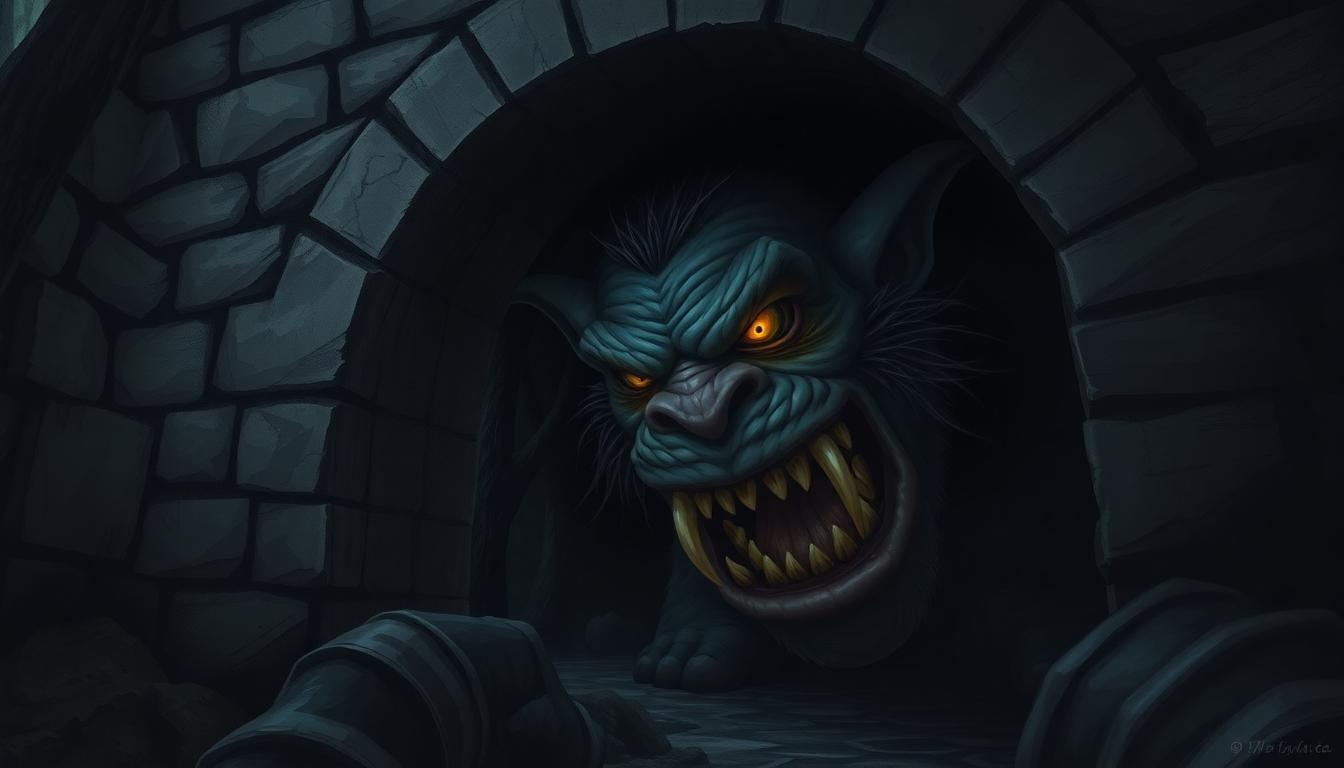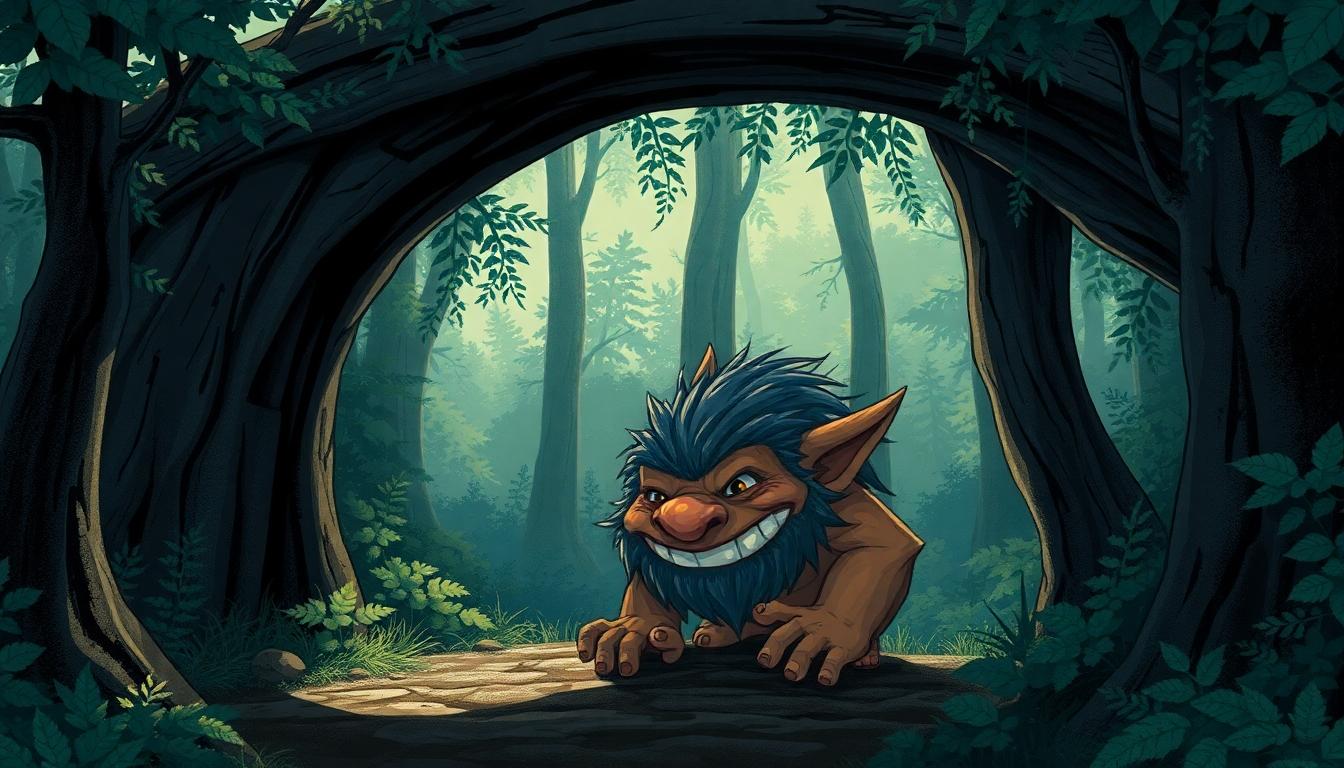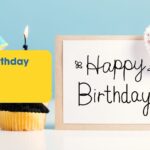Ready to test your wit against some mind-bending challenges? Tricky troll riddles have been stumping even the smartest puzzle enthusiasts for generations. These brain-teasers aren’t your average riddles—they’re deliberately designed with unexpected twists and double meanings to lead you down the wrong path.
We’ve compiled an ultimate collection of these devious puzzles that’ll have you scratching your head and questioning your problem-solving abilities. Whether you’re looking to challenge friends at your next gathering or simply want to sharpen your own critical thinking skills, these troll riddles offer the perfect mental workout. From seemingly simple questions with surprising answers to complex wordplay that’ll make you groan when you finally get it—we’ve got them all.
The History and Appeal of Tricky Troll Riddles
Troll riddles have entertained and frustrated puzzle enthusiasts for centuries, dating back to ancient Norse folklore where trolls were known for their cunning challenges to travelers. These brain-teasers gained important popularity during medieval times when riddles were used as entertainment at social gatherings and royal courts. Their modern incarnation emerged in the 1960s when recreational puzzle books began featuring riddles with intentional misdirection.
The internet era catapulted troll riddles to new heights of popularity around 2010, particularly on platforms like Reddit and 4chan where users would share increasingly complex word puzzles designed to confuse readers. Social media later transformed these riddles into viral challenges that spread across Facebook, Instagram, and TikTok, reaching millions of puzzle enthusiasts worldwide.
What makes troll riddles so appealing is their unique psychological impact on solvers. They create a satisfying “aha moment” when the unexpected answer finally clicks, releasing dopamine in the brain and generating a sense of accomplishment. This cognitive reward system explains why people continually seek out these puzzles even though the frustration they often cause.
Linguistically, troll riddles employ several clever techniques including double meanings, homonyms, and deliberate ambiguity to lead listeners astray. They differ from traditional riddles by intentionally guiding solvers toward incorrect assumptions, making the eventual solution feel both surprising and obvious in retrospect.
Educational benefits of these puzzles extend beyond mere entertainment. They develop critical thinking skills by training the brain to question initial assumptions and consider multiple interpretations of language. Many teachers and cognitive development experts incorporate troll riddles into learning activities to enhance problem-solving abilities and lateral thinking among students of all ages.
10 Classic Tricky Troll Riddles That Will Leave You Scratching Your Head

Ready to test your wits against some legendary brain-teasers? These classic troll riddles have stumped countless puzzle enthusiasts through the years with their deceptive simplicity and clever wordplay.
- “I have large teeth and a mighty claw, If you try to pass, you’ll feel my jaw. What am I?”
This fearsome creature guards passages with menacing teeth and powerful claws. Many travelers have encountered this intimidating presence when attempting to cross certain territories. The answer is simple yet effective: a troll.
- “I guard the bridge with fierce pride, If you want to cross, you must decide. What am I?”
Standing sentinel at crossing points, this entity challenges all who wish to pass with tests of wit or strength. Travelers throughout folklore have needed to overcome these guardians to continue their journeys safely.
- “Beneath the bridge, I guard my domain, With riddles and puzzles, I bring you pain. Who am I?”
Lurking under crossings, this creature controls passage with mental challenges rather than physical might. Known for testing travelers with brain-teasers before allowing them to proceed, the answer is a troll.
- “I’m wild and strong, with a bad temper, If you challenge me, you’ll remember. What am I?”
Notorious for volatile outbursts and incredible physical power, this being has become synonymous with unpredictable rage. Encountering one is an experience few forget due to their intimidating presence and fierce disposition.
- “I hide in darkness, with glowing eyes, If you try to pass, you might meet your demise. What am I?”
Concealed in shadows with only luminous eyes visible, this creature presents a deadly threat to unwary travelers. Their ominous presence serves as a warning to those who dare venture through their territory.
- “I’ve got big hands and a mean glare, Under a bridge, you’ll find me there. What am I?”
Characterized by oversized appendages and an intimidating stare, this figure makes its home beneath crossings. Their distinctive appearance has become iconic in stories and legends across many cultures.
- “I’m known for being tough and bold, My temper is short, my grip is cold. What am I?”
Renowned for courage and strength coupled with a quick-triggering anger, this entity seizes opportunities with an unforgiving grasp. Their resolute nature makes them formidable adversaries in countless tales.
- “I may be gruff and rough in a fairy tale, across my path, the goats prevail. What am I?”
Even though a fearsome reputation, this character famously lost to clever goats in well-known stories. The famous Three Billy Goats Gruff tale features this creature being outsmarted by increasingly larger goats crossing its bridge.
- “With turns and twists, I hide my end, like the homes ancient trolls defend. What am I?”
Complex and confusing by design, this structure conceals its exit through deliberate misdirection. Similar to the intricate caves and underground dwellings associated with trolls in mythology, the answer is a labyrinth.
- “Though I’ve many forms, more than several, in ancient lore, I’m quite the devil. Who am I?”
Appearing in various shapes and sizes throughout different cultural traditions, this figure typically represents malevolence or trouble. Featured prominently in Norse mythology and other ancient storytelling traditions, the answer is a troll.
The Famous “What’s Always Coming but Never Arrives?” Riddle
This classic riddle has puzzled minds for generations with its seemingly contradictory premise. The question poses a logical paradox about something constantly approaching yet never reaching its destination. Solvers often overthink this riddle, considering complex concepts like horizons or deadlines, when the answer is elegantly simple: tomorrow. Each day, tomorrow approaches, yet once it arrives, it becomes today, making tomorrow perpetually on its way but never actually here.
The Deceptive “How Many Months Have 28 Days?” Challenge
Many people immediately think of February when faced with this tricky question, particularly focusing on leap years and calendar specifics. The cleverness of this riddle lies in its misdirection, leading solvers toward a limited perspective when considering the answer. Upon closer examination, the truth becomes amusingly obvious—all twelve months have at least 28 days. This riddle exemplifies how troll riddles exploit our tendency to make assumptions without examining the actual wording of the question.
7 Mathematical Troll Riddles That Only Look Simple

These mathematical troll riddles appear straightforward at first peek but contain clever twists that challenge even the sharpest minds. Each puzzle requires thinking beyond conventional logic to uncover the solution.
The Missing Dollar Problem
The Missing Dollar Problem has confounded countless puzzle enthusiasts for decades. Three friends dine at a restaurant, each ordering a $10 meal for a total bill of $30. They pay with a $100 bill and receive $45 in change from the server. When dividing the change, each friend takes $15, meaning they’ve effectively paid $35 ($100 – $45) for three $10 meals. This creates an apparent discrepancy of $5, which seems to have mysteriously vanished. The trick lies in the flawed accounting method – they didn’t actually pay $55 ($30 + $25), but rather $30 for the meals and received $70 in change ($45 + $25 tip). The seemingly missing money doesn’t exist; it’s simply an error in how we’re tracking the transaction.
The Age Calculation Conundrum
The Age Calculation Conundrum presents a sophisticated logical challenge involving subtle mathematical clues. Two mathematicians engage in a conversation where one knows the ages of the other’s three children. Though given the product and sum of their ages, the first mathematician can’t determine the exact ages. This riddle hinges on multiple possible answers for the same sum and product combinations. For example, if told the product is 36 and the sum is 13, several combinations could work: (1,6,6), (2,2,9), or (3,3,4). The puzzle’s resolution comes when additional context is provided – perhaps mentioning the oldest child’s hair color – allowing the mathematician to eliminate all but one possibility. This brain teaser demonstrates how seemingly insufficient information can become adequate when combined with contextual clues.
8 Wordplay Troll Riddles That Play With Your Mind

Wordplay troll riddles represent the pinnacle of linguistic trickery, designed to twist your thinking and challenge your perception. These brain-teasers use clever language manipulation to create puzzles that are deceptively simple yet surprisingly complex.
Homophone Puzzlers
Homophone-based riddles leverage words that sound alike but have different meanings to create clever misdirection. These auditory illusions force you to think beyond what you initially hear.
- “I dwell beneath, where shadows creep / If you try to pass, I’ll make you leap.”
The answer is “Troll” – playing on the creature that lurks under bridges and the action of lurking online.
- “Cross my path, you’ll feel alone / Though I’m not flesh, nor am I stone.”
This riddle reveals “Social media troll” as its answer, cleverly using the homophone to connect mythical trolls with their internet counterparts.
Double Meaning Dilemmas
Double meaning riddles exploit words with multiple interpretations to lead your thinking astray. These puzzles require you to consider alternate definitions before arriving at the correct solution.
- “I’m ugly, fierce, and on the prowl / Cross my path, and you’ll hear a howl.”
The answer “Troll” works as both an aggressive mythical creature and an online provocateur.
- “Guard the bridge with a growl / To pass, you must solve or howl.”
This classic riddle refers to a “Troll” in its traditional folklore role as a bridge guardian.
- “I’m not a beast, but close enough / Blocking paths when roads get rough.”
“Troll” serves as the answer, playing on both physical roadblocks and mythical creatures.
- “Tales tell of my transformation skill / A multi-form predator poised to kill.”
The answer “Shapeshifter” connects to troll mythology through the common theme of transformation.
- “With twists and turns, I hide my end / Like homes ancient trolls defend.”
“Labyrinth” is the answer, symbolizing the complex, winding habitats associated with trolls.
- “You’ll meet me where debates arise / I’ll test your wits, but not your eyes.”
The answer “Enigma” reflects trolls’ traditional fondness for posing riddles and puzzles.
5 Logic-Based Tricky Troll Riddles for Critical Thinkers

Logic-based troll riddles test your deductive reasoning and critical thinking skills with cleverly designed paradoxes and contradictions. These brain-teasers require careful analysis to unravel their answers.
The Three Trolls Riddle
This classic logic puzzle features three trolls guarding a bridge, each making a contradictory statement. Troll 1 declares, “One of us is a liar.” Troll 2 counters with, “No, one of us is a truth-teller.” Troll 3 insists, “We are all liars.” The solution hinges on identifying that only Troll 2 tells the truth while the others lie. This conclusion resolves the apparent contradiction, as Troll 3’s statement that “all are liars” must itself be a lie, and Troll 1’s statement contradicts Troll 2’s truthful assertion about there being exactly one truth-teller.
The Troll’s Password Paradox
Five three-letter words (HOE, OAR, PAD, TOE, VAT) hold the key to this devious puzzle. The troll whispers a unique letter to each traveler attempting to cross its bridge, creating a logical deduction challenge. OAR proves to be the password because its letters (O, A, R) appear in all words except VAT, maximizing redundancy for pattern recognition. Travelers must analyze which combination of letters provides the most consistent pattern across the given words to discover this solution.
The Alternating Truth-Teller Troll
This riddle features a troll with an unusual truth-telling pattern—it alternates between honesty and deception each day. When truthful today, it lies tomorrow without fail. Travelers face a life-or-death decision about crossing a bridge and must formulate the perfect question: “If I asked you tomorrow whether this bridge is safe, would you say yes?” The beauty of this question lies in how it navigates the alternating pattern, ensuring that a truthful reply indicates safety while accounting for the troll’s predictable deception schedule.
The Net Paradox Challenge
Captured creatures face a cunning troll who demands they solve a logical riddle to earn their freedom from its net. These puzzles typically require identifying contradictions within the troll’s own statements or demands. Success depends on exposing logical flaws in the troll’s reasoning, demonstrating that its conditions create an impossible scenario. This meta-riddle tests one’s ability to recognize when rules create unsolvable situations.
The Exact Count Conundrum
Multiple trolls each claim, “Exactly X of us are truth-tellers,” with X varying for each troll. Valid answers require identifying which statement creates logical consistency among all claims. For example, with three trolls making claims that 0, 2, and 2 truth-tellers exist respectively, only Troll 2 can be truthful. This conclusion follows because if only one troll tells the truth (Troll 2), then exactly 1 truth-teller exists, invalidating the claims of Trolls 1 and 3—precisely what we’d expect from liars.
6 Visual Troll Riddles That Deceive Your Eyes

Visual troll riddles take deception to another level by challenging not just your mind but your perception. These puzzles deliberately manipulate what you see, creating optical illusions and visual tricks that can frustrate even the most observant puzzle enthusiasts.
Pattern Recognition Puzzles
Pattern recognition puzzles test your ability to identify sequences and relationships within seemingly random visual elements. Many troll versions present patterns that appear straightforward but contain subtle disruptions designed to mislead you. For instance, a series of shapes might follow a logical progression until one element breaks the pattern in an almost imperceptible way. The cognitive illusion aspect comes into play when your brain automatically fills in expected patterns, causing you to overlook the actual solution. These puzzles often use geometric shapes, numbers, or symbols arranged in ways that suggest obvious patterns while hiding the true solution in plain sight. Your brain’s tendency to seek order and meaning makes these visual trolls particularly effective at creating that frustrating yet satisfying “aha” moment when you finally spot the deception.
Hidden Image Challenges
Hidden image challenges represent some of the most popular visual troll riddles, requiring careful examination to discover concealed objects or figures. These puzzles often present ordinary-looking scenes where animals, faces, or objects are cleverly integrated into the background elements. The troll aspect emerges when the hidden elements are positioned in unexpected ways, utilizing negative space or optical illusions to further obscure their presence. Many hidden image trolls play with perspective, where viewing the image from different angles reveals entirely new elements. Some particularly devious examples include images that appear to show one thing at first peek but transform into something completely different upon closer inspection. Your visual processing system can be easily deceived by these challenges because it prioritizes recognizing familiar patterns over detecting anomalies, making these riddles both frustrating and immensely satisfying when solved.
How to Create Your Own Tricky Troll Riddles

Understand the Core Elements
Tricky troll riddles thrive on exact characteristics that make them both challenging and satisfying to solve. Guardian themes form the foundation of classic troll riddles, positioning the troll as a gatekeeper who blocks paths or demands answers before allowing passage. Misleading structures incorporate contradictions like “I guard but do not protect” or situational irony such as “I dwell beneath, yet you cannot pass.” Metaphorical language enhances these riddles by comparing trolls to everyday obstacles or natural phenomena, creating depth and complexity in seemingly simple questions.
Master the Crafting Techniques
Establishing dual meanings serves as a crucial technique when creating compelling troll riddles. Use homonyms or homophones strategically—words like “sole” for “soul” or “bridge” in both literal and figurative contexts—to create the deceptive layer trolls are known for. Incorporating folklore tropes connects your riddles to traditional troll mythology, referencing bridge-guarding, shapeshifting, or adversarial roles to enhance authenticity. Leveraging common scenarios makes your riddles relatable by basing them on universal experiences like fear or unexpected consequences, drawing solvers into familiar territory before surprising them with the twist.
Follow a Framework for Creation
Building effective troll riddles requires a balanced approach that maintains the classic structure while allowing for creative variation. Start by identifying the guardian theme you want to explore—whether it’s a troll as an obstacle, a keeper of secrets, or a deceptive guide. Create your riddle with deliberate dual meanings that mislead solvers initially but become obvious once the answer is revealed. Add folkloric elements that echo traditional troll interactions, such as bridge-crossing challenges or payment demands, to ground your creation in the rich history of troll mythology.
Apply the Principles with Examples
Crafting a riddle like “I guard what you seek but never find” (answer: “A dead-end”) demonstrates the application of troll riddle principles. The guardian theme positions the troll as an obstacle that prevents progress. Dual meaning appears in the word “seek,” which implies both physical searching and metaphorical desire. The folkloric echo mimics traditional bridge-troll interactions where travelers face unexpected challenges. This structure creates the perfect balance of deception and thematic consistency, adhering to conventional troll-riddle expectations while delivering a satisfying twist.
Incorporate Contradictions and Wordplay
Effective troll riddles often feature contradictory elements that initially confuse solvers. Phrases like “I’ll block your path, if the road is rough” create paradoxical situations that require lateral thinking to resolve. Wordplay enhances the deceptive nature of these riddles through strategic use of homonyms, metaphors, and double entendres. Balancing these elements ensures your riddle remains challenging without becoming impossibly frustrating, maintaining the delicate line between difficulty and solvability that makes troll riddles so captivating.
The Benefits of Solving Tricky Troll Riddles for Brain Health

Solving tricky troll riddles offers substantial cognitive benefits that contribute to overall brain health. Research indicates that captivating with challenging puzzles like troll riddles activates multiple areas of the brain simultaneously, promoting mental agility and cognitive function. Let’s explore the exact ways these mind-bending challenges support brain health.
Enhances Critical Thinking and Problem-Solving
Tricky troll riddles engage our critical thinking abilities by requiring us to approach problems from multiple angles. These puzzles demand logical reasoning skills as we work through their deliberate misdirections and clever wordplay. Studies show that regularly captivating in puzzle-solving activities helps maintain cognitive sharpness and mental agility, making troll riddles an excellent brain workout.
Provides Cognitive Enrichment
Troll riddles serve as a form of cognitive enrichment that may help protect against mental decline. Research suggests that challenging brain activities create what scientists call “cognitive reserve,” potentially offering protection against age-related cognitive issues. By actively captivating with these puzzles, we’re essentially strengthening neural pathways and promoting brain plasticity.
Reduces Stress and Anxiety
Taking time to solve troll riddles can actually function as a form of stress relief. The focused concentration required creates a meditative-like state that helps reduce anxiety and overthinking. Many puzzle enthusiasts report feeling a sense of calm and mental clarity after spending time working through challenging riddles, making them a valuable tool for mental wellness.
Improves Mental Flexibility and Adaptability
Regular engagement with troll riddles can significantly improve mental flexibility. The unexpected twists in these puzzles force our brains to adapt quickly and process information in novel ways. This adaptability transfers to real-industry situations, helping us become more responsive to new challenges and better at processing complex information in our daily lives.
Builds Confidence and Motivation
Successfully solving challenging troll riddles provides a confidence boost that can motivate further intellectual engagement. The satisfaction of cracking a particularly difficult puzzle triggers reward centers in the brain, creating positive reinforcement for tackling other mentally stimulating tasks. This cycle of challenge and accomplishment helps maintain ongoing interest in brain-healthy activities.
Tricky troll riddles offer more than just entertainment—they’re a valuable tool for maintaining and improving brain health through regular cognitive exercise. By incorporating these puzzles into our routine, we’re making an investment in our mental wellbeing that pays dividends in enhanced cognitive function.
Conclusion: Why We Can’t Resist a Good Troll Riddle
Tricky troll riddles have captivated minds across centuries for good reason. They’re not just entertaining puzzles but gateways to sharper thinking and unexpected moments of delight.
Whether you’re solving ancient Norse challenges or creating your own brain-teasers we’ve seen how these riddles strengthen our cognitive abilities while delivering that satisfying “aha” moment we all crave.
So next time you encounter a cleverly disguised trick question don’t get frustrated—embrace the challenge! Your brain will thank you and you’ll join the countless generations who’ve fallen under the spell of these delightfully deceptive puzzles. Ready to become a troll riddle master? The journey’s just begun.
Frequently Asked Questions
What are troll riddles?
Troll riddles are brain teasers with unexpected twists and double meanings designed to challenge puzzle enthusiasts. Originating from Norse folklore where trolls posed cunning challenges to travelers, these riddles use deliberate ambiguity, wordplay, and misdirection to trick the solver. The satisfaction comes from the “aha moment” when you finally understand the clever twist.
What makes troll riddles different from regular riddles?
Troll riddles specifically incorporate elements of misdirection and often have answers that seem obvious in hindsight but are difficult to see initially. Unlike standard riddles that test knowledge, troll riddles challenge assumptions and exploit linguistic ambiguities. They’re designed to make you think you’re looking for a complex answer when the solution is often surprisingly simple.
Where did troll riddles originate?
Troll riddles trace back to ancient Norse folklore, where mythical trolls challenged travelers with cunning questions. They gained popularity during medieval times as entertainment at social gatherings and royal courts. The 1960s saw their resurgence in puzzle books, and they exploded in popularity around 2010 with internet forums like Reddit and 4chan.
What are some examples of classic troll riddles?
Classic examples include “What’s always coming but never arrives?” (tomorrow), “How many months have 28 days?” (all of them), and various “What am I?” riddles describing creatures guarding bridges. These showcase the misdirection and simplicity that define troll riddles, making answers feel both surprising and obvious once revealed.
Are there different types of troll riddles?
Yes, troll riddles come in several varieties: wordplay riddles using homophones and double meanings; mathematical puzzles with deceptive calculations; logic-based challenges testing deductive reasoning; and visual riddles using optical illusions or hidden images. Each type employs different techniques to challenge and surprise solvers.
What cognitive benefits come from solving troll riddles?
Solving troll riddles enhances critical thinking, problem-solving skills, and mental flexibility. Research suggests these puzzles help build “cognitive reserve” that may protect against age-related mental decline. They also reduce stress by providing meditative-like focus, improve adaptability to new situations, and boost confidence when successfully solved.
How can I create my own troll riddle?
To create a troll riddle, focus on establishing dual meanings or misdirection. Incorporate elements like guardian themes, misleading structures, and metaphorical language. Balance traditional elements with creative variations, and use contradictions or wordplay to enhance the challenge. The best troll riddles are engaging without becoming excessively frustrating.
What makes a good troll riddle?
A good troll riddle strikes the perfect balance between challenge and solvability. It should contain clever misdirection that makes solvers question their assumptions, yet have a solution that feels obvious in hindsight. The best riddles use familiar contexts in unexpected ways, contain linguistic tricks, and deliver a satisfying “aha moment” when solved.







